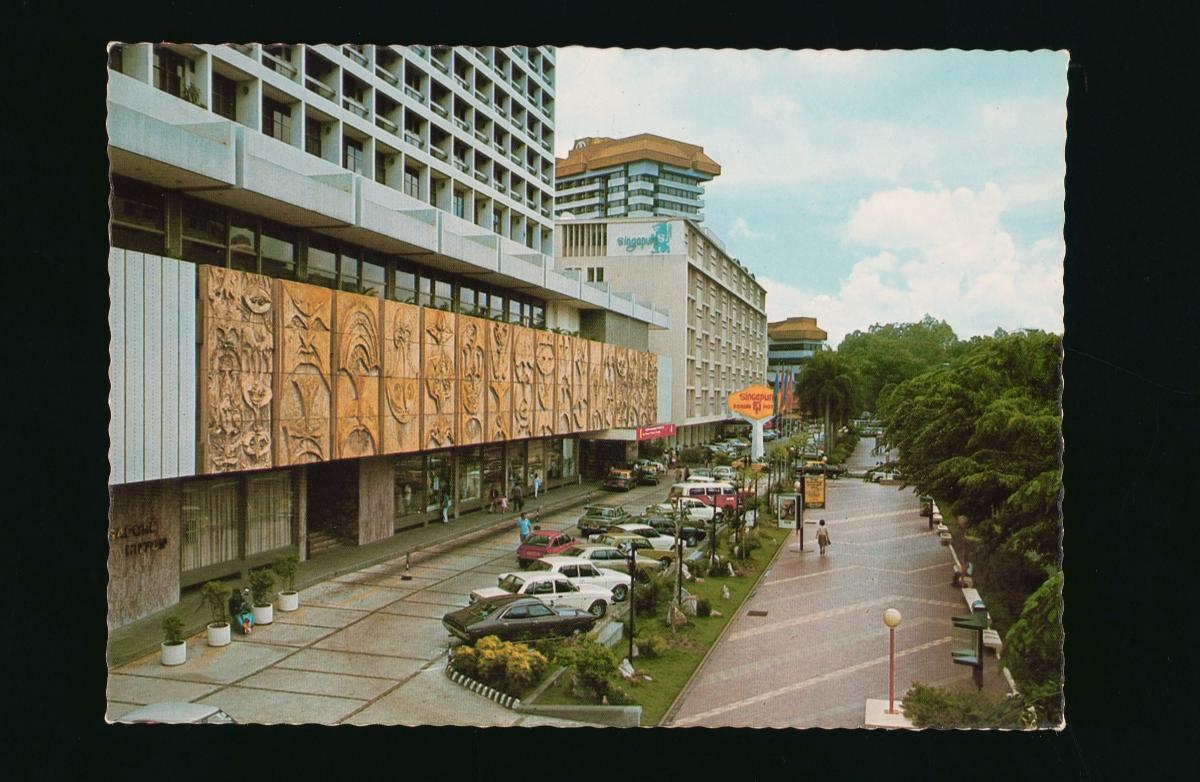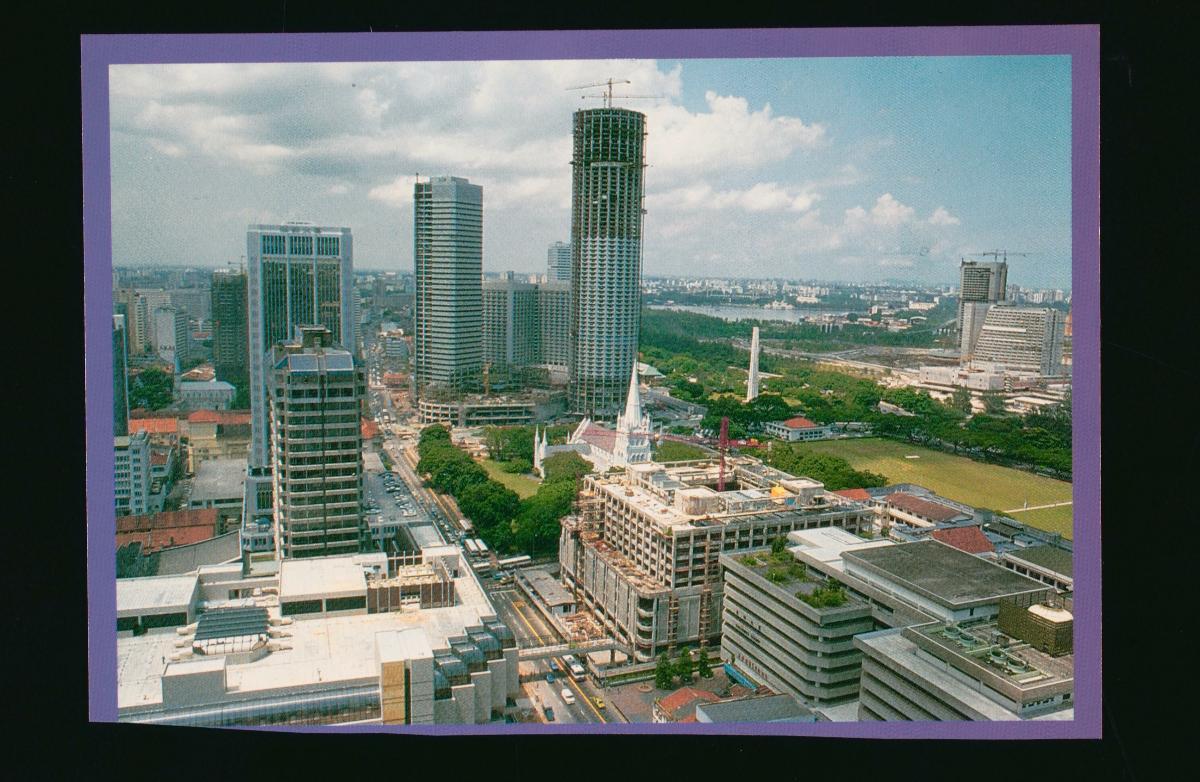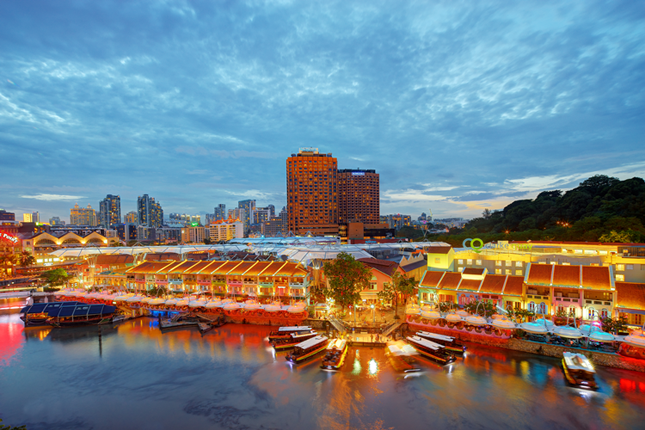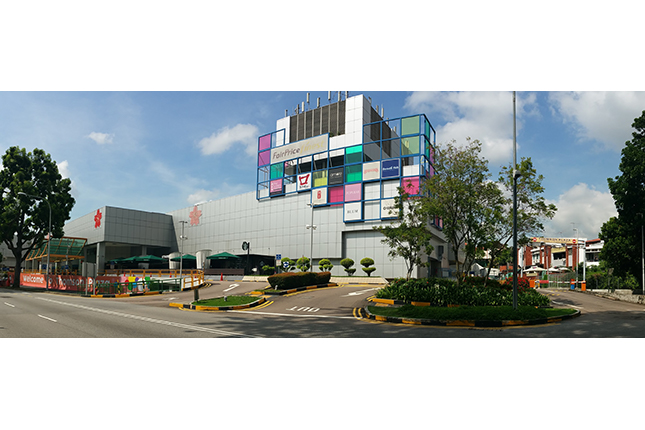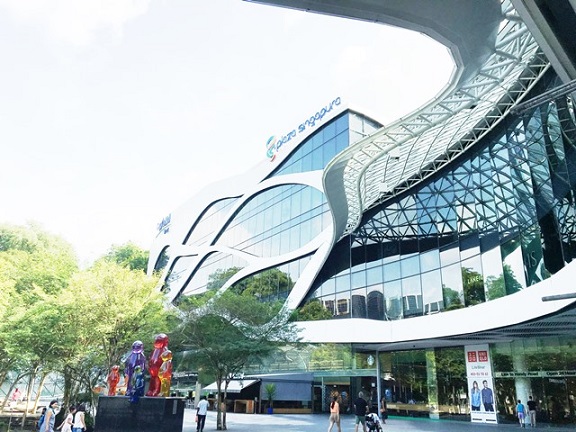Text by DBS Bank
Did you know, there’s a hidden canal under Stamford Road that leads to Raffles City? Or, that when Plaza Singapura first opened, rental was only SGD 1 a month!1 Learn about the lesser-known histories of iconic Singapore buildings built by DBS in the 1970 and 1980s. With a mandate to stimulate a young nation’s development, DBS started its property development operations soon after it was established in 1968.
In 1969, DBS Realty was formed as a subsidiary to handle real estate developments and act as real estate agents for clients including the Government.2 In 1981, DBS restructured its property interests and activities under DBS Land3, which was eventually merged with Pidemco Land to form CapitaLand in 2000.4
Read on to discover more fun facts about these buildings.
1. When Plaza Singapura opened, monthly rental for a shop unit was only SGD 1
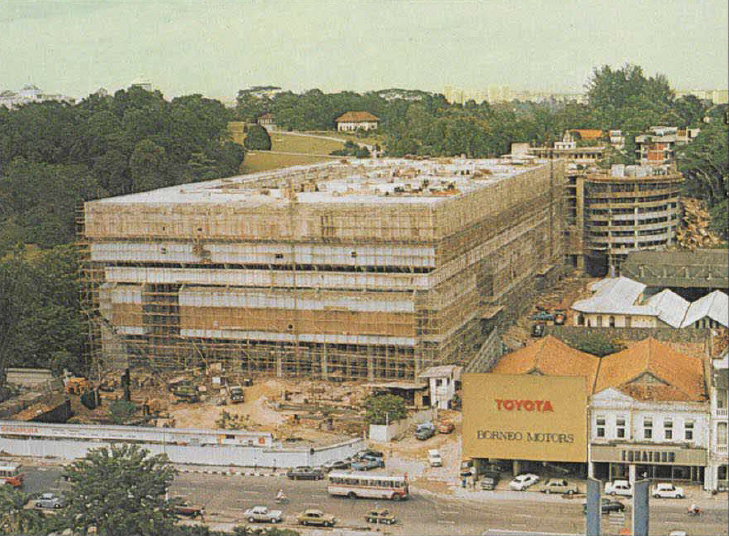 Plaza Singapura under construction, 1973 (Source: DBS Bank)
Plaza Singapura under construction, 1973 (Source: DBS Bank)
Plaza Singapura was built to introduce Singaporeans to a whole new way of shopping. The high-end family mall concept was untested in the 1970s and would be the nation’s first multi-story mall with an anchor tenant.
The aim: create a successful lifestyle concept so more investors would build similar projects in Singapore.
Despite the careful planning, the mall’s 1974 opening coincided with a global oil crisis that badly affected Singapore – and it was hard to attract tenants and customers to the new mall.5
The proposed solution: offer potential tenants a low rent of SGD 1 a month.
“It was important to bring the crowds in even if they did not buy anything,” recounted former DBS Chairman S Dhanabalan. “The bank decided to offer whole shop unit space at SGD 1 per month, for people to display their wares there, as a showroom.”
When the economy picked up, the scheme was discontinued, and Plaza Singapura exploded in popularity. The number of visitors could reach 110,000 a day!6
Read More:
2. Thomson Plaza, a first-of-its-kind mall with barrier-free features
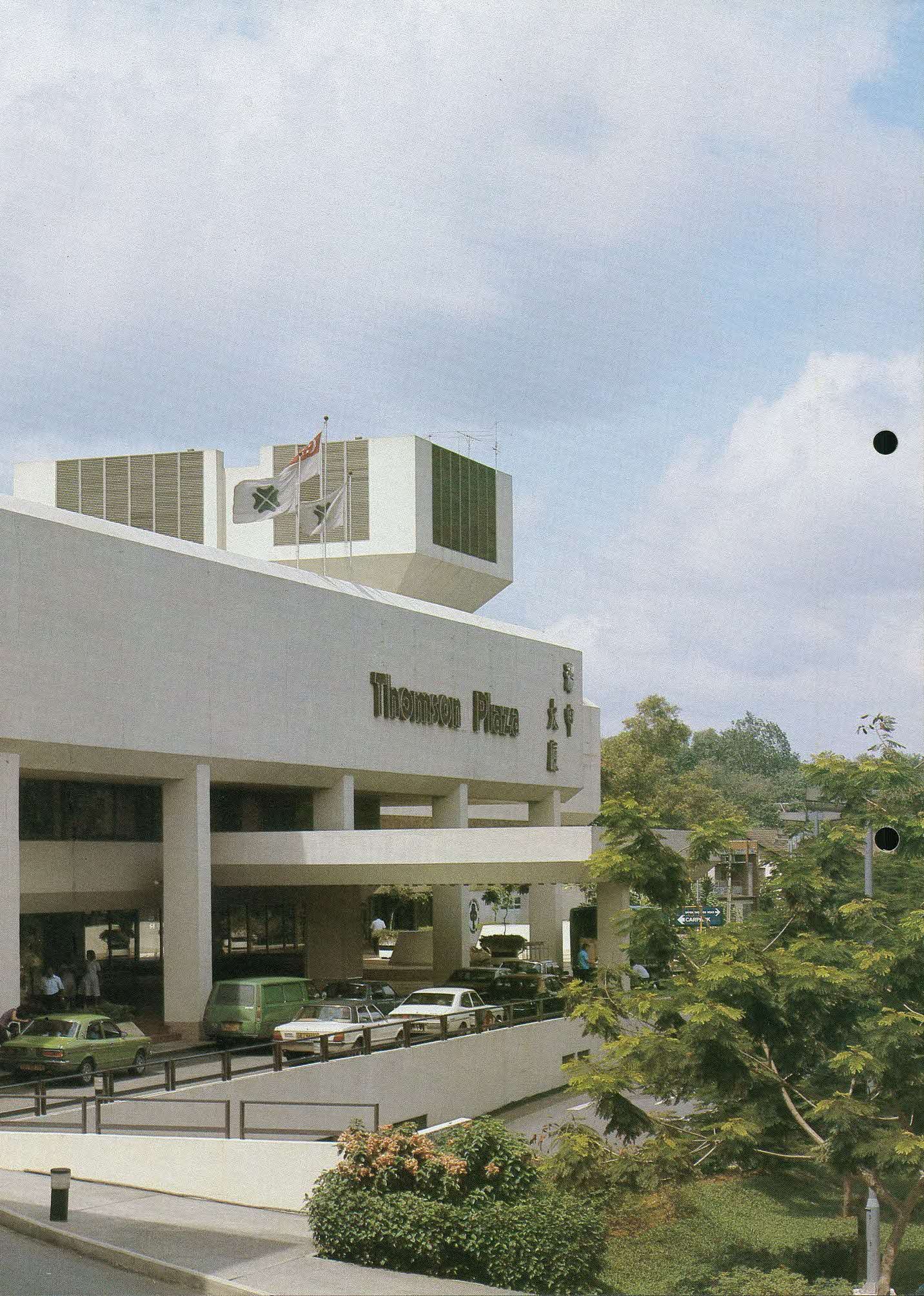 Thomson Plaza, 1979 (Source: DBS Bank)
Thomson Plaza, 1979 (Source: DBS Bank)
Plaza Singapura’s successful family mall concept was replicated in the heartlands with the opening of Thomson Plaza in 1979 – with a special enhancement.
Featuring step-free ramps between each level, doors fitted with lever handles for easier opening, and bigger toilets for wheelchair access, Thomson Plaza was among the first public buildings in Singapore with barrier-free features.7
“We had to think progressively … This is why we placed an emphasis on comfort, accessibility, and thoughtful design, all in the face of limited budgets,” explained James Ng, DBS Land’s project manager for Thomson Plaza.
To further ensure safety, the DBS team requested for authorities to cover up the large drain in front of the mall, inadvertently creating the forerunner of pedestrian walkways that would later benefit shoppers across the island as covered drains and walkways became mainstream.8
Read More:
3. Concrete was poured continuously for three days to build Raffles City
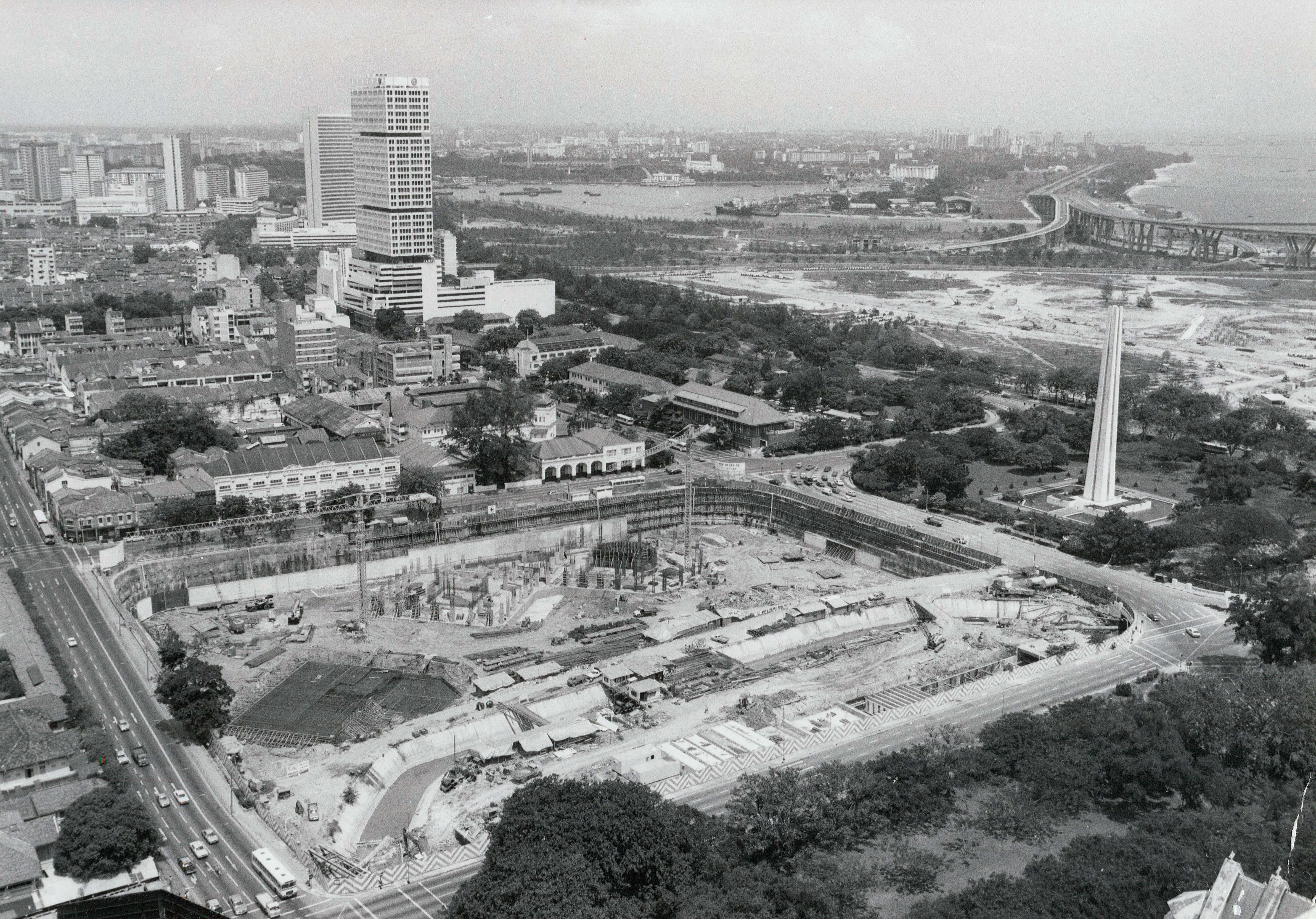 Raffles City under construction, 1982. (Source: DBS Bank)
Raffles City under construction, 1982. (Source: DBS Bank)
A project of massive complexity, it took 10 years to plan the construction of Raffles City. And the actual construction? That took seven years!
The integrated complex included the world’s tallest hotel then, the 73-storey Westin Stamford (now called Swissotel The Stamford). Building its mat foundation required 72 hours of continuous pouring of concrete!9 A batching plant was set up nearby to ensure a continuous supply.
To construct the huge basement of Raffles City, engineers dug through layers of soil and rock. At one section, the ground had so many big boulders, the Ministry of Defence used explosives to blow them up at night.10
Surrounding areas of the complex also had to be developed, including covering a section of Stamford Canal. Today, this canal runs under Stamford Road. “That must have been one of the most difficult parts of the project, because Stamford Canal has a lot of utilities connections, cables, and water pipes, among others,” said Mr Loh Soo Eng, who held various leadership roles in charge of real estate projects, included General Manager of DBS Land.
When it opened, Raffles City was credited for its “great foresight” in successfully introducing the Meetings, Incentives, Conferences and Exhibitions (MICE) concept to Singapore, which stimulated business tourism and enhanced the Lion City’s reputation as a premier base for large multinational companies.
Read More:
4. The 50-storey DBS building was named in the Guinness World Records
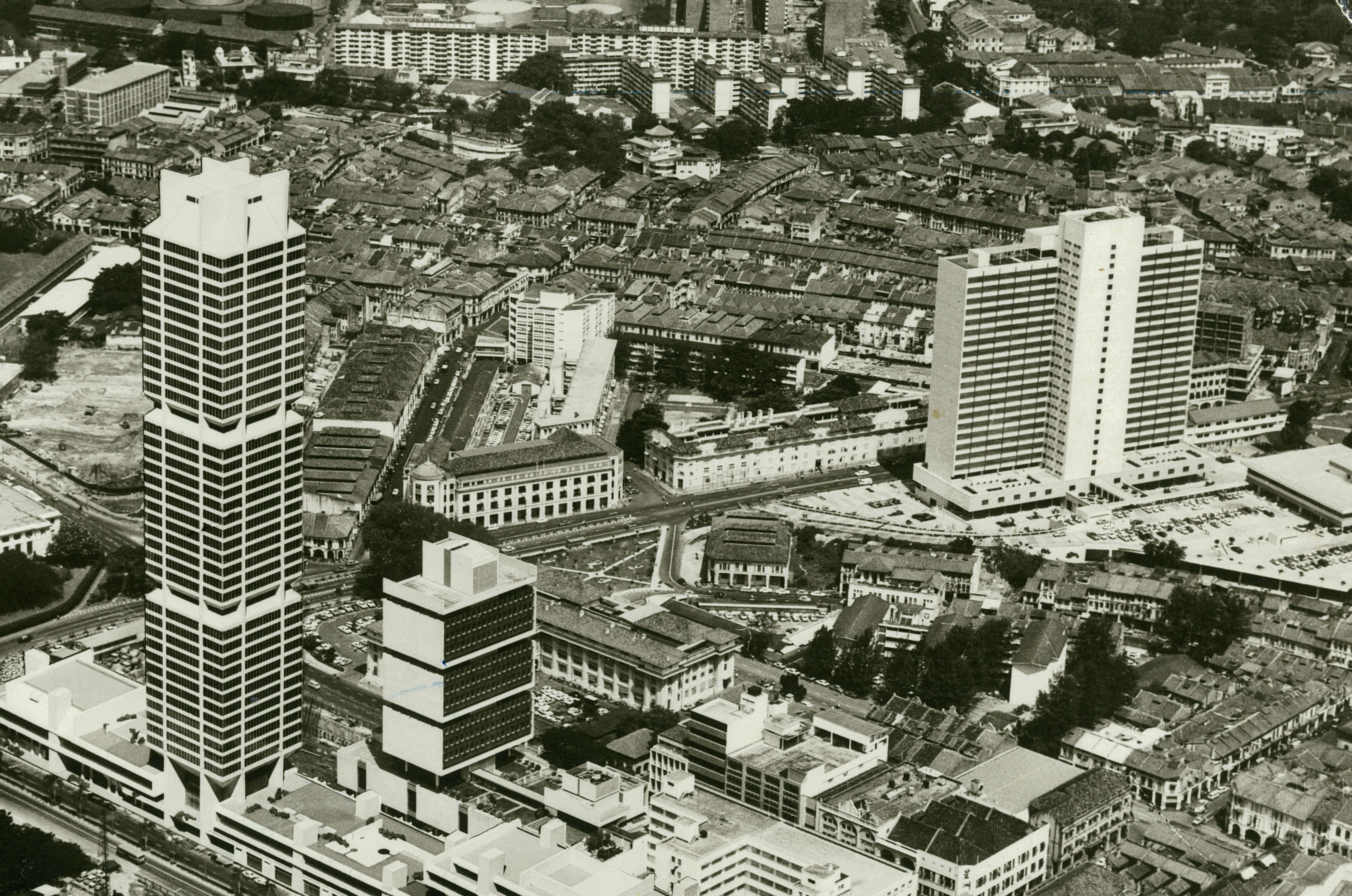 The 50-storey DBS Building along Shenton Way, 1975. (Source: DBS Bank)
The 50-storey DBS Building along Shenton Way, 1975. (Source: DBS Bank)
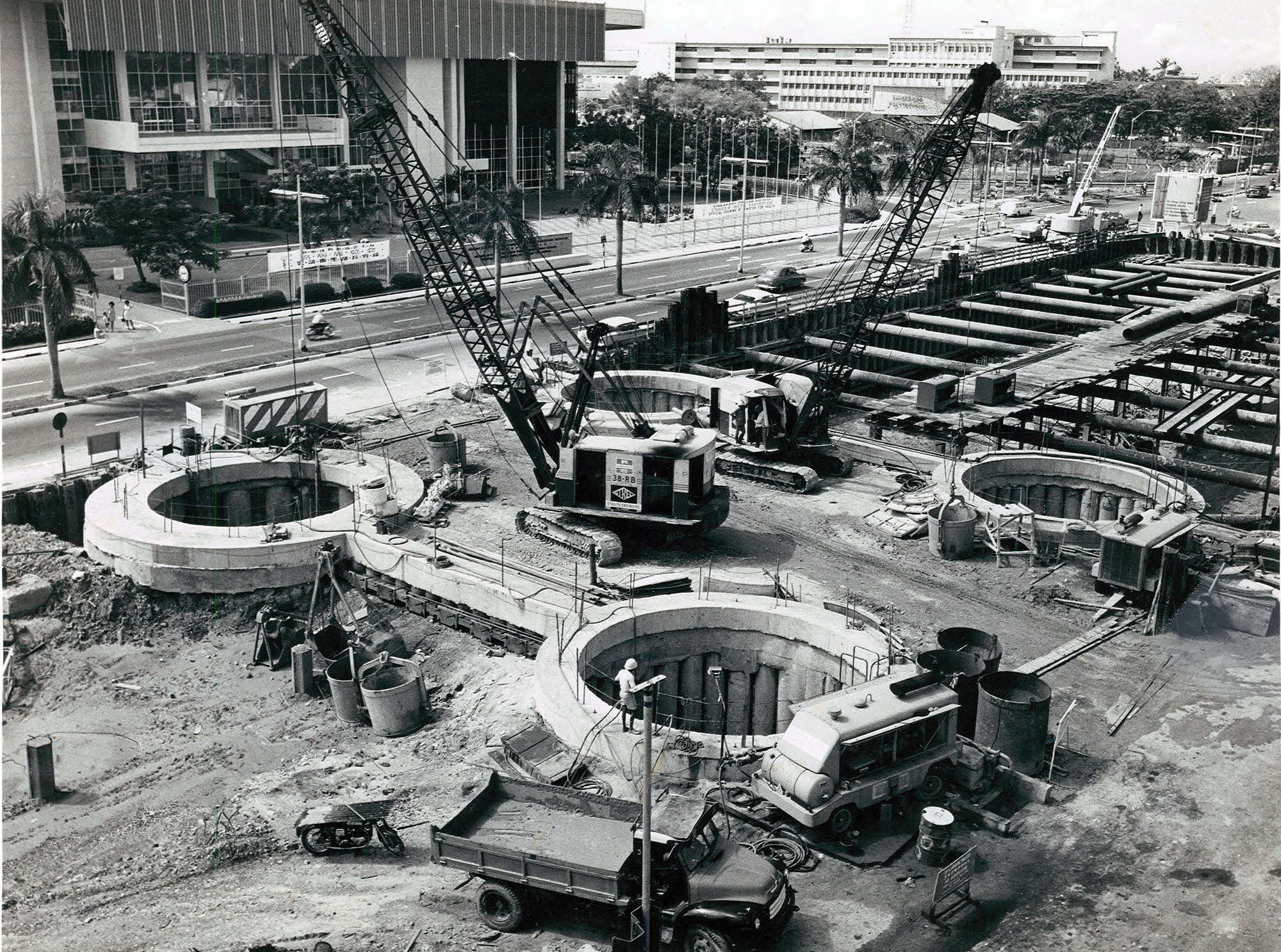 These record-breaking caissons were the inspiration behind the DBS logo. (Source: DBS Bank)
These record-breaking caissons were the inspiration behind the DBS logo. (Source: DBS Bank)
The DBS Building along Shenton Way was Singapore’s first 50-storey skyscraper in 1975 and paved the way for other skyscrapers.11
Due to the size of the building, it had to be built on a very solid foundation comprising four 6.8m-in-diameter caissons12, which were extremely big and sunk in deep into the ground. Their size was necessary to support the weight of the building on less-than-ideal soil conditions, which was a mixture of stiff and soft clay.13
These caissons claimed the title of “greatest diameter of bored pile” in the Guinness Book of Structures: Bridges, Towers, Tunnels, Dams. Each pile could support a load of over 12,000 tons.14
The four caissons later inspired DBS’ logo.
Read More:
5. When Pandan Valley first launched, buyers could sell back their properties at the original price to the developer within 5 years
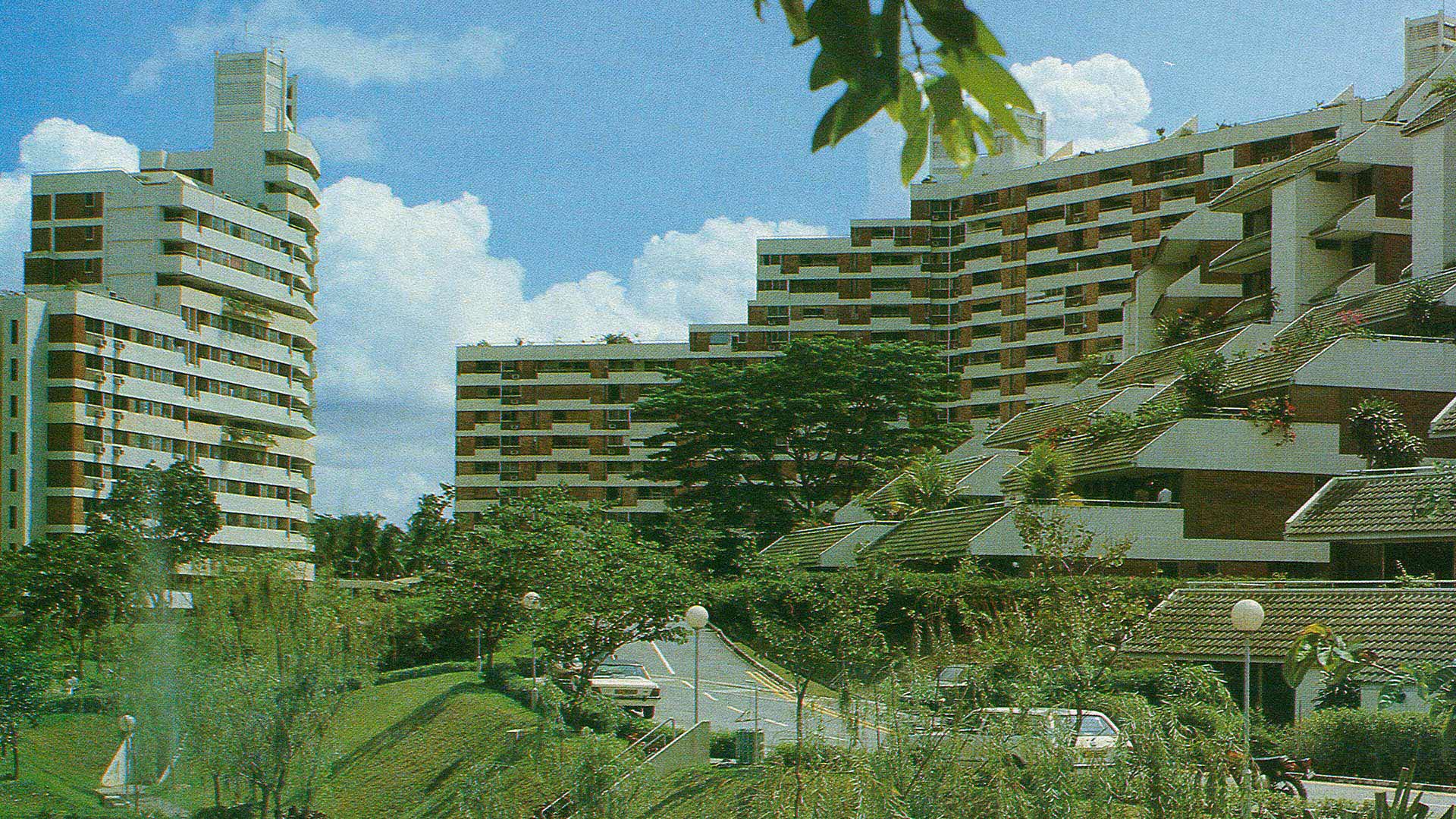 Pandan Valley condominium. (Source: DBS Bank)
Pandan Valley condominium. (Source: DBS Bank)
Pandan Valley Condominium was developed to introduce Singaporeans – particularly the middle-income – to a brand new (and affordable!) way of living. Prior to this, the main options were either landed property estates or HDB apartments. Still, despite best intentions and an array of facilities – from putting greens to music and ballet schools – the property market went into a sharp downturn, affecting Pandan Valley’s sales.
An innovative offer was thus made to assure buyers they could sell their properties at the original price back to the developer within five years!15
“We made this offer, as we were confident the market would turn around. It was a signal of confidence, which helped the market recover,” recounted Mr Dhanabalan. “The market later picked up, and we didn’t have to keep the offer open.”
In 1979, two years after its launch, the condominium was almost fully occupied.
Read More:
This article was developed for
Singapore HeritageFest 2024.




